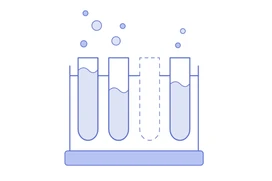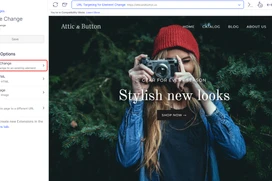Web experimentation is not only about testing, its an entire process
In the fast-moving world of web development, where user expectations evolve rapidly and competition is fierce, it can be hard to know if the user is getting what they want. This is where experimentation becomes a powerful ally. More than just A/B testing, experimentation is a mindset and a structured approach to validating ideas, solving user problems, and driving meaningful outcomes.
Experimentation refers to a cycle of hypothesis-driven development in which you test ideas and features in a controlled manner before committing fully. It's about moving from "we think this will work" to "we know this works" by collecting real data and feedback.
This process is important whether you're launching a new product, optimizing a checkout flow, or adjusting a website's layout.
The core steps of the experimentation process
Identify a problem or opportunity
The process begins by identifying an issue worth investigating. This could come from analytics data (e.g., a high bounce rate), user feedback, or stakeholder insight. The goal is to define the why behind your experiment.
Example: "Users are dropping off at step 2 of the sign-up process. Why is this happening?"
Formulate a hypothesis
A good hypothesis is specific and testable. It should indicate what change you are making, what outcome you expect, and why.
Example: "If we simplify the form by removing optional fields, then completion rate will improve because the process feels faster and easier."
Design your experiment
This involves choosing the right method—A/B test, multivariate test, user survey, prototype test, etc.—and defining metrics for success. In web projects, this often includes conversion rates, time on page, or task completion rates.
Key considerations:
- Who will see the experiment? (segmentation)
- How long will it run?
- What tools will be used? (e.g. Google Optimize, Optimizely, VWO)
Implement and launch
In our case, we use Optimizely Web Experimentation, which is a user-friendly and non-technical tool where the practitioner can easily adjust the appearance of a web page. It is always good to do this in consultation with developers and designers to ensure that appearance, presentation spirit or accessibility are not impaired.
Collect data and analyze the results
Once the experiment is up and running, let it run for a statistically significant amount of time. Then analyze the results. Did the change achieve the desired effect? Were there unintended consequences?
Use visualizations and recordings of user sessions if needed to deepen your understanding.
Decide and act
If the hypothesis is validated, roll out the change to all users. If not, you've still learned something valuable. Sometimes the most informative experiments are the ones that fail – because they rule out incorrect assumptions.
Experimentation culture: making it stick
Building an experimentation culture means encouraging curiosity, tolerating failure, and prioritizing evidence over opinions. Here are some practices to help embed this into your team:
• Document each experiment: Include hypotheses, design, results, and lessons learned.
• Review experiments regularly: Share results between teams to spread knowledge.
• Celebrate learning, not just wins: A "failed" test is still a successful step in learning what doesn't work.
The experimentation process transforms web projects from guesswork to guided exploration. It enables teams to build with confidence, move faster without sacrificing quality, and continuously evolve in response to real user needs.
Whether you're testing a button color or a new onboarding flow, the discipline of experimentation ensures you’re not just building things right—but building the right things.




We would like to hear what you think about the blog post